Women to watch: contributions, achievements and observations of outstanding female professionals – Part I
To mark International Women’s Day, the women of ION Analytics, including reporters at Debtwire, Mergermarket, Dealreporter, Cybersecurity Law Report and Anti-Corruption Report have interviewed outstanding women in their respective jurisdictions and fields.
It is our honor to highlight these women and their accomplishments and contributions to their industries, and share some of their insights and perspectives. These lawyers, advisors and consultants from around the world specialize in private equity, restructuring, mergers and acquisitions, hedge funds, anti-corruption, data privacy and more. We hope these remarkable women inspire you as much as they do us.
In Part I of this six-part series, Debtwire legal analyst Dawn Grocock profiles notable women in the UK restructuring field.
Kate Stephenson, Partner, Kirkland & Ellis, London
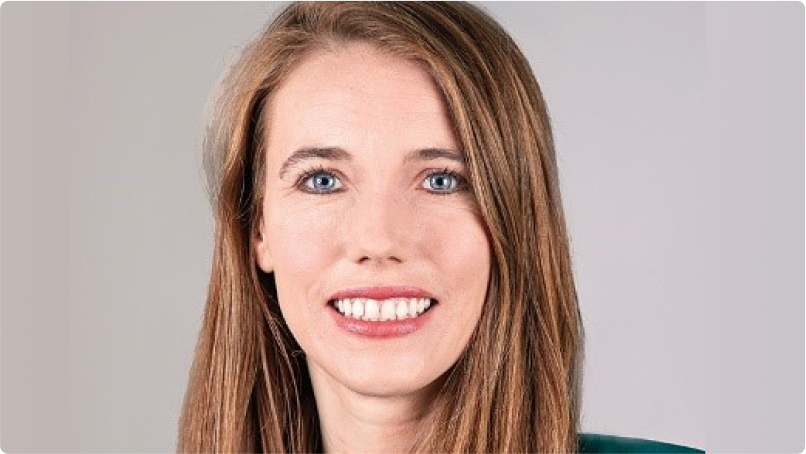
Kate is a Partner in Kirkland’s European Restructuring Group. Kate has extensive restructuring and insolvency experience, including advising strategic investors, insolvency practitioners, turnaround managers, directors, debtors and creditors in all forms of national and international financial restructurings and insolvencies.
What are the biggest changes you’ve seen since you started in the industry?
Technically, the biggest changes have been Brexit (and the consequent loss of automatic recognition between the UK and EU) and the huge shift toward preventive restructuring processes in the UK and EU (with the potential to cram-down dissenting classes dramatically impacting the art of the possible in restructurings). In terms of women in the industry, there are many more of us now plus more initiatives and organisations to promote, connect and inspire women in the industry.
What do you see as the most notable issue or trend right now in the industry, and do you recall what a big issue or trend was when you started out?
Right now, most major complex restructurings involve some formal challenge, which certainly wasn’t the case when I started out. I qualified in March 2008, six months before the Global Financial Crisis hit – unforgettable!
Women have made tremendous strides in our industry over the past 20 years. What would you like to see more of for women, professionally?
Continual improvements in equality of opportunity, and an appreciation that every person brings something slightly different to their role.
Rada Dimitrova, Senior Director, Alvarez & Marsal, London
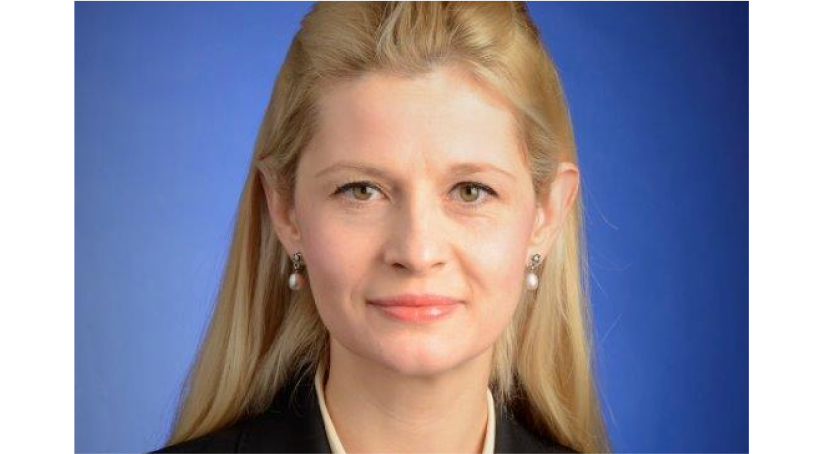
A Senior Director with Alvarez & Marsal Restructuring in London, Rada has extensive experience in corporate finance, debt origination, restructuring and advisory roles across a range of industries in EMEA, including FI, power & energy, technology, industrials and consumer & retail. Prior to joining Alvarez & Marsal, Rada worked for investment bank at Citi as well as the restructuring teams at Houlihan Lokey and KPMG/Interpath Advisory.
What are the biggest changes you have seen since you started in the industry?
Since the now distant 2012 when I first joined the industry, the restructuring advisory landscape in Europe has become extremely competitive.
New players have entered the market; there has been significant spin-off and M&A activity. Established firms have expanded service offerings, while boutique shops have sought niche areas. All that at the backdrop of easy credit and low interest rate environment which has averted a massive restructuring wave and thus limited market opportunities for restructuring advisors.
The key question going forward is who will make it in such a competitive marketplace. Brand and reputation remain a differentiating factor, but not only. Constant innovation of offering, as well as incorporation of technology and AI – both as internal tools, but also in the context of client services – will be key. Moving away from commoditized products to higher value-add tailored advice – for example interim management/executive capacity based on strong crisis management or industry knowledge – can serve as a big competitive advantage.
What do you see as the most notable issue right now in the industry and do you recall what a big issue or trend was when you started out?
Back in 2012, both corporates and financial institutions were still grappling with the aftermath of the GFC – legacy debt burdens, the need to restructure operations and, in the context of banks, portfolios of non-performing loans. Sovereign debt crises in countries like Greece, Spain, Italy, and Portugal created significant volatility on the financial markets.
Regulators have since then worked hard to implement reforms to strengthen the financial system. As a result, European banks’ balance sheets nowadays are broadly healthy (excluding the recent Credit Suisse debacle) and sovereign debt situations are mostly in emerging markets. More than a decade of quantitative easing since the GFC, coupled with government stimulus during the COVID pandemic, provided a fairly benign environment for borrowers.
Since the beginning of 2023 credit conditions have tightened following central banks’ rate increases and geopolitical risk has sharply risen. We have not so far seen a wave of distressed activity, however highly leveraged borrowers are feeling increasingly fragile. One notable example is Austrian real estate group Signa, which – having been dangerously exposed to a sharp rise in interest raise and reduced asset values – recently entered into insolvency proceedings.
The historically high level of dry powder may help us avoid a cataclysmic wave of distress, but equally, the challenge of elevated debt-service costs for borrowers, lower valuations and investors’ increased focus on fundamentals will certainly lead to increased refinancing risks, and consequently – an uptick in restructuring activity in the coming years.
Women have made tremendous strides in our industry over the past 20 years. What would you like to see more of for women, professionally?
I am pleased to see restructuring firms’ increasing effort to attract female talent. Significant progress has been made, although female representation – especially on a senior level – is still relatively limited, which nurtures the perception of restructuring as a largely male-dominated world.
There are a number of things that organizations could do to address that. The obvious one is to take into account commitments outside the workplace and – within reasonable limits – provide flexibility for senior working women. I think there is a lot more awareness and understanding in this regard nowadays which is a positive development and I do give organizations credit for that.
Another very important area of focus – which unfortunately I believe to be still overlooked – is the actual career support and development. Hiring female talent is the stepping stone, but how are organizations developing talent to reach senior levels? Firms should ensure the right mentorship is in place so that women are given sufficient opportunities to gain the right experience, expertise and exposure in order to progress to leadership positions. Otherwise we will never be able to grow the pyramid and organizations will not be able to take advantage of the unique point of view women bring.
Kat Burke, Of Counsel, Maples Group, Dublin
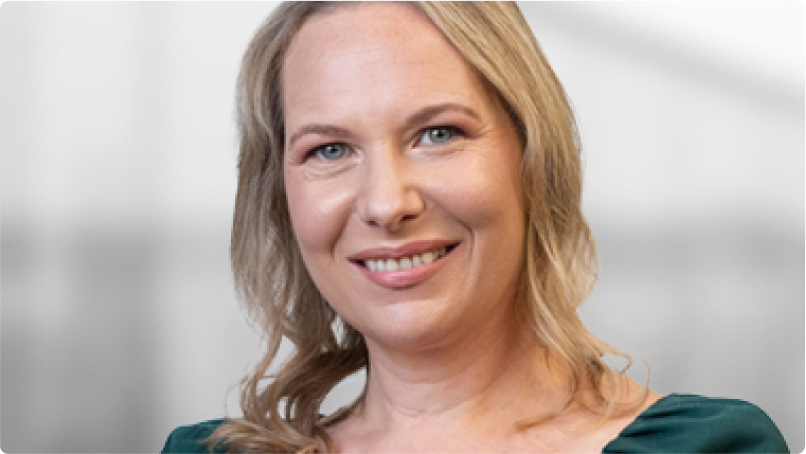
Kat is Of Counsel in the Dispute Resolution & Insolvency team at Maples Group, Dublin
What are the biggest changes you’ve seen since you started in the industry?
Perhaps it’s been a shift in my perspective as I moved around different jurisdictions, but restructurings seem to be more global in nature and there are a lot more options for companies to use different tools for corporate rescue. I have seen over my career the trend of ‘where to restructure’ migrate over time due to the advantages of different jurisdictions, the cost of proceedings and advisors and the sophistication of the bar and bench. Restructurings will continue to be successful in each domestic jurisdiction, but for large cross-border restructurings, there is an ebb and flow that has moved over time.
When I started in 2008, most multinational companies that needed a financial restructuring opted for a strategic pre-packaged Chapter 11. It was a quick in and out of court process that allowed a company to de-lever. It is an expensive process, but it was what the company needed to get back on track. There were few processes that could compete with a Chapter 11 that offered the same ability to cut debt without losing control of the company.
As Chapter 11 grew more and more expensive and increasingly litigious, companies looked to other jurisdictions. English schemes have been quite popular over the last decade for foreign companies with English debt able to achieve the same goal at a fraction of the cost, but these too have now become expensive and very litigious.
The trend now seems to be to restructure in the Cayman Islands and Europe. Part of the move to the Cayman Islands has been because of the vast number of Chinese companies that have used Cayman Islands entities for raising debt in the US markets and stock exchange listings. When these companies become distressed the place where their registered office is located is the natural choice. Although Chinese companies could theoretically use the US Chapter 11 process to restructure, they are reluctant to engage with US courts and the Cayman Islands has English-style schemes of arrangement at a more attractive price point.
Following Brexit and the implementation of the EU Directive on Preventive Restructuring Framework, European jurisdictions have become more attractive, particularly Ireland, which is well-placed to provide a pan-European solution without the need for a parallel UK proceeding.
While Ireland has had a preventative restructuring regime for over 30 years, most EU countries have only implemented these regimes since 2020. However, recognition and the binding effect of EU procedures has been lost in the UK post-Brexit, except for Irish proceedings. Irish courts are the only EU courts eligible under the UK’s Insolvency Act to request special assistance from the English courts to bind English creditors.
Just this year, an Irish Court made a request to the English Court to bind English creditors to an Irish scheme obviating the need for a parallel procedure in the UK and successfully restructuring the company with one main proceeding. There have been an increasing number of complex cross-border Irish Examinership proceedings and schemes of arrangement both with and without parallel proceedings.
For example, the Maples Group’s restructuring team represented aircraft lessors in what was a pioneering Irish Examinership of a European airline and has also represented official creditors’ committees in parallel Irish proceedings to US chapter 11s in Mallinkcrodt and Endo. I expect this trend to continue where more companies restructure in Ireland and Europe with or without parallel schemes.
And these trends are precisely why I joined this firm because this is where I see the future of European and global restructuring. The Maples Group in particular has the depth and breadth of restructuring experience in both Ireland and offshore.
What do you see as the most notable issue or trend right now in the industry, and what big issue or trend was when you started out?
The trend when I started in restructuring was ‘Too big to fail’. I started as a lawyer on the day Lehman Bothers filed for Chapter 11 bankruptcy. As I stepped into the Honorable James M. Peck’s chambers in the Southern District of New York to start my clerkship on Sept 15 2008, he told me he had just been assigned the Lehman Bros. case. What an amazing and interesting first case.
From there, lawmakers around the world were consumed by the idea of companies that were too big to fail and created Dodd Frank laws in the US and Markets in Financial Instruments Directive (MiFID) in the EU. The economy was swinging wildly after the Lehman filing, but eventually with government intervention, things settled.
The reality is that Lehman wasn’t too big to fail. It failed and the bankruptcy system dealt with it. It was a difficult case that took a few years to resolve, but it did resolve and there was a good recovery for creditors. A lot of time was spent developing Dodd Frank and MiFID, which seems to have pushed the market away from bank lending and into private credit.
And interestingly this private credit lending market is now the trend, which is leading to what people are calling ‘creditor on creditor violence’. This was not a term we used when I started, but it’s an interesting progression. Combining private credit with decades of covenant-light documentation has created an environment that pits creditors against creditors. There are so many more players in the market with different strategies and creditors now need to protect themselves from strategies like up-tiering and trap doors, that can lead to some creditors being left behind. I think we will see this peak and then the documents and creditors will adjust.
Women have made tremendous strides in our industry over the past 20 years. What would you like to see more of for women, professionally?
I would like to see more gender parity with our male colleagues across the legal sector globally. According to statistics, women make up approximately 28% (US) and 37% (UK) of the partnerships in law firms. This is the case notwithstanding that many incoming lawyer classes are at or close to gender parity and have been for quite some time.
And while there is certainly a lot of work to do across global law firms to address gender imbalance at partner level, I’m proud to work at a firm where currently 40% of the Irish partnership is made of up of women, and within a global organisation that is very focused on developing our female talent by promoting an inclusive culture that is designed to attract, retain and advance a gender balanced and diverse workforce throughout all levels of the firm.
While we have seen progress over the years with more women achieving partnership, board and C-suite roles, there is more to do and we, along with male allies, need to continue that push for substantive equality and gender parity.
Lindsay Hingston, Partner, Freshfields Bruckhaus Deringer, London

Lindsay is a partner specialising in restructuring and insolvency. Lindsay advises across the full spectrum of stakeholders and processes on both domestic and cross-border restructuring matters. Her experience includes acting for financial creditors, borrowers, insolvency officeholders, pension trustees and others on matters involving restructuring plans, schemes of arrangement, company voluntary arrangements, security enforcements, pre-packs and other formal insolvency appointments, intercreditor disputes, out-of-court restructurings and distressed M&A. During her time at Freshfields, Lindsay has been seconded to work as a banking associate in the Financial Restructuring Group at Houlihan Lokey. Lindsay is ranked in Chambers UK and was included in GRR’s 40 under 40 2022 and The Lawyer’s Hot 100 for 2021. She sits on the ILA Council and is a member of IWIRC.
What are the biggest changes you’ve seen since you started in the industry?
I could point to lots of different things – the identity of the creditor base, the competitive landscape, the way we work etc. However, the point I would single out is the changes to the restructuring toolbox. The two main drivers to this have been (i) the loosening of credit terms, which has opened the door to liability management and (ii) the introduction of cross-class cram-down regimes across the world, inspired to a greater or lesser extent by US Chapter 11. This has given debtors a lot more optionality and opens the door to more creditor-on-creditor violence, which is translating into more contentious processes.
What do you see as the most notable issue or trend right now in the industry, and do you recall what a big issue or trend was when you started out?
I started out in 2010 and all the talk was about the “wall of debt”, referring to the amount of debt maturing in the near term and how much of it might need to be restructured. The more apocalyptic warnings turned out to be over-stated – while plenty of restructurings were required, the take off in the high yield bond market in Europe allowed much of the wall to be refinanced. In 2024 we find ourselves in a not dissimilar place, with much talk about the 2026 “wall of debt” – the product of the 2021 boom year. This time, it is the huge growth in private credit which is likely to provide at least part of the answer, although in a “higher for longer” interest environment we may find that some of the most over-leveraged capital structures start to break.
Women have made tremendous strides in our industry over the past 20 years. What would you like to see more of for women, professionally?
I would love to see more women coming through to the most senior ranks in the industry. I’m incredibly proud to be part of one of the most gender diverse teams in the market – we have a 50/50 split amongst our most senior (partner and counsel) bench. That’s still a rarity, but we see focus on this issue across the industry, being spearheaded by the great work of IWIRC and others, and I am optimistic that the next 20 years will bring even more transformation.
Sarah Rayment, Managing Director, Kroll, London
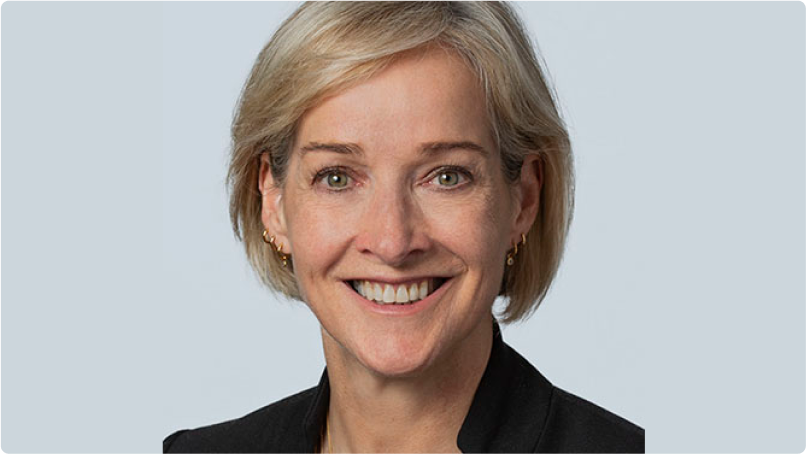
A managing director and co-head of Kroll’s Restructuring practice, Sarah is a licensed insolvency practitioner with more than 30 years’ experience in restructuring and corporate recovery, dealing with businesses from small and medium enterprises to large corporates, both nationally and internationally, at various levels of distress.
What are the biggest changes you’ve seen since you started in the industry?
When I started in the early 90s, I was often the only female working on assignments. I’m pleased to say things have significantly changed since then as gender equality in the workplace has accelerated. Diversity and inclusion programmes and women’s networks within firms are now commonplace and considered critical to employee engagement. These didn’t really exist at the beginning of my career, or if they did, there were not many senior women to drive them forward. When I had my first maternity leave in 1997 there was not much incentive to return to work. We have come a long way since then and whilst there is always room for improvement, it’s encouraging to see more women active in the industry.
What do you see as the most notable issue or trend right now in the industry, and do you recall what a big issue or trend was when you started out?
When I started in the industry, the work I was involved in was very much creditor led with a large number of trading administrative receiverships. The banks’ attitudes were “demand and appoint”. The approach now is much more collaborative. There has been a shift away from formal insolvency work to advising boards of directors, contingency planning, options analysis, business reviews and strategic planning.
Another factor is that lenders may not have the same ability to take action as security documentation has become more covenant-lite in the past few years. This can also limit restructuring options as the lender may only become aware there is an issue when there is a liquidity issue.
Where boards of directors recognise there is a potential issue and take advice from firms such as Kroll, they are better placed to have meaningful negotiations with stakeholders be that trade creditors, lenders or shareholders.
Women have made tremendous strides in our industry over the past 20 years. What would you like to see more of for women, professionally?
Research has shown companies benefit from having diversity at board level as it provides a greater variety of perspectives and ideas, which in turn can drive better decision-making and outcomes. While we have made progress regarding female representation in senior leadership positions, there is still more to do. Firms should continue to address pay gaps and focus efforts on retaining women by investing in their professional growth and supporting them throughout every stage of their life. Meaningful employee assistance policies regarding maternity and childcare, health and wellness including menopause, and work-life balance are essential for creating a workplace environment in which women can thrive.
Jennifer Marshall, Partner, Allen & Overy, London
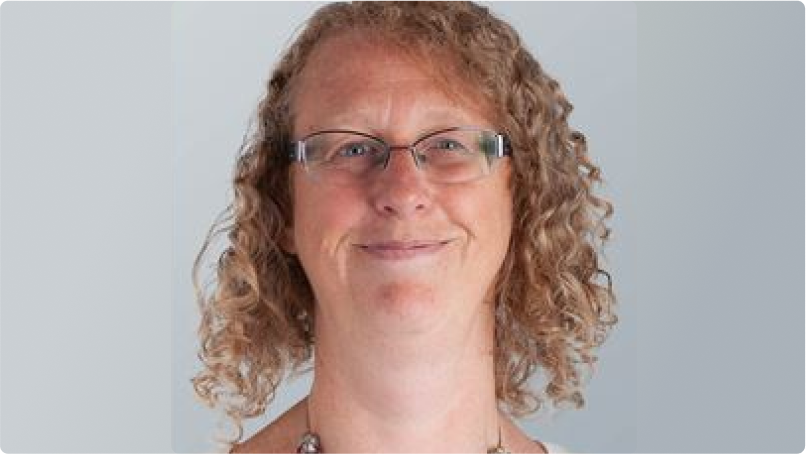
Jennifer specialises in a wide range of work in commercial, banking, restructuring and insolvency law. She advises generally on issues arising in taking and enforcing of security, structuring transactions to mitigate against the effects of insolvency and cross-border restructuring transactions.
What are the biggest changes you’ve seen since you started in the industry?
In the 27 years that I have been practicing (more if you include my training contract), I have seen huge changes, in all areas. I think the most significant one for women trying to juggle careers with family life is the ability to work flexibility. I remember being somewhat of a pioneer when I worked four days a week as an associate when I had my twin boys 17 years ago. It was a challenge, particularly when doing transactional work, but I managed to sustain it for a number of years, largely because of the excellent associates that I worked with who would cover for me on my non-working day (and in return, I would cover for them when they needed time away from the office). I do remember, though, talking to the head of HR about the possibility (at that time) of being a part-time partner. The response was one of incredulity: what does part-time look like when a partner is expected to work 24/7? Now of course we have a number of part-time partners with different models that suit their working and home arrangements. And of course Covid had a huge positive impact in demonstrating that working from home does not mean playing golf or going shopping. I do think the use of technology (video calls, the ability to see if someone is online, the ability to work from home securely and without compromising client data) has made a real difference. It is probably true that the pendulum has swung too far the other way and we do need to encourage our associates (male and female) of the benefits of being in the office but I think the key here is flexibility: it does not need to be all or nothing.
What do you see as the most notable issue or trend right now in the industry, and do you recall what a big issue or trend was when you started out?
Although we have come quite a long way since I started my career, we still need more women partners – and also more women partners in senior management positions. In that sense, it is the same issue as when I started out. And of course this is not just limited to gender equality although that is clearly the topic of this article. This is a really hard nut to crack and there is clearly no silver bullet. But I do believe that mentoring women at an early stage of their career is important. I still see many talented women who think that they are not good enough to become partner (or are perhaps concerned about all the responsibilities that would come with that role) where some of their less talented male colleagues would have no such qualms. I also think we need to look carefully at partnership selection processes. If the majority of partners who are doing the selection are men, it is I suspect inevitable that they will choose candidates in their own image. This is of course a difficult one because, while we have fewer women partners (with many demands on their time), it may be difficult to get a proper balance in things like partner selection committees.
Women have made tremendous strides in our industry over the past 20 years. What would you like to see more of for women, professionally?
I would like to see more women as senior or managing partners of law firms – or at the very least with board positions. I do feel a little hypocritical about this as I would not want to take on such a role for all the tea in China but it would still be lovely to see. In this regard, I am very excited that we have two women running for the senior leadership positions at Allen & Overy in our current elections and I wish them both the best of luck!
Natasha Harrison, Founder and Managing Partner, Pallas Partners, London

Founder and Managing Partner of the London and New York offices of Pallas, Natasha focuses on complex commercial litigation disputes in the English Courts, internationally and through arbitration.
What are the biggest changes you’ve seen since you started in the industry?
I felt completely like an outsider going into law. Coming from a non-professional family, I was the first member to attend university. I didn’t know any lawyers personally until my late teens whom I met during a couple of brief work experiences. When I started at the Bar, it was still dominated by white, male, Oxbridge-educated individuals. I still remember that in 1996, when I was first called to the bar, women were not even permitted to wear trousers.
However, over what is close to the three decades I have been practicing law, although there is still a long way to go, there has been real and meaningful progress. While a career in law is now more accessible to a broader range of society, we must improve pathways for younger people from underprivileged and ethnically diverse backgrounds. Additionally, we should not lose momentum for women in the law. A huge number still leave pre-partnership and/or when they start a family. This must change.
There must also be change in the way that law firms operate. When I founded Pallas Partners, my ambition was to create the ‘blueprint for a modern law firm’. A firm that challenges the status quo and recognises that people have real-life pressures with outside commitments (I speak with first-hand knowledge). To support our lawyers, we have implemented support structures, including bespoke coaching programs. These programs cover specific areas such as parental leave (for both parents) and performance improvement. Our partners also seek to lead by example – leaving to get home before their children are asleep and attending school events.
What do you see as the most notable issue or trend right now in the industry, and do you recall what a big issue or trend was when you started out?
Times have certainly changed since I started out in 1996 when the prominent areas in litigation included shipping, construction, and advisors’ negligence (the now diluted House of Lords decision was handed down in SAAMCO]. From the early 2000s, cross-border insolvencies kicked off (Enron/ Worldcomm – both of which I was closely involved in). Then in 2008, we had the financial crisis and I was involved in many important cases, including acting for the bondholders of the three collapsed Icelandic banks, as well as creditors of many other European banks that had been wiped out. All of these were career-changing moments for me, taking me out of my comfort zone, accelerating my legal knowledge, client relationships and ultimately my practice.
The trends in 2024 have common themes with the early days of my practice and 2024 has certainly kicked off at a fast pace in the international disputes market. We are already seeing a significant number of trends play out: an uptick in Sponsor and restructuring disputes, more litigation around ‘broken deals’, as well as an increase in fraud-based claims (often in the PE space where firms have now realised what they purchased during the COVID rush, is not consistent with what they now own). The growth of securities litigation is also entering a critical and exciting phase (we are currently acting for the largest group of institutional investors in the Glencore case). Additionally, ESG-related litigation is prompting concern for many asset managers. Complex global supply chains with multiple layers of subcontractors can cause real reputational risk, and as a result I think we will begin to see a rise in challenges, including in relation to prospectus liability. I also anticipate that more not for profit organisations such as ClientEarth will be using litigation as a tool to enforce accountability and drive behavioural change in the markets.
Women have made tremendous strides in our industry over the past 20 years. What would you like to see more of for women, professionally?
We have seen a significant move forward in the recognition and promotion of women over the past 20 years. Pallas, for example, is predominantly female led. However, more needs to be done to retain women and create environments in which they can truly thrive.
Key to the success of any lawyer as they become more senior, is for them to become fluent in the business of law, and to be building out client relationships with the ultimate goal of building a book of business (whilst lawyering at the very highest level). To reach the top echelons of a law firm it is not enough to be a brilliant lawyer (although of course necessary); you need to be bringing in business (no one ever seems to admit this). This is something which women have traditionally struggled to do, for a variety of reasons, including the traditional sponsorship of male lawyers by male partners and very few female role models; time challenges – particularly when they start having a family; and an understandable a lack of confidence. The number of female business generators is dwarfed by the number of male generators and this needs to change. It may not be right, but it needs to be acknowledged that as matters currently stand, female lawyers will have a louder voice in the boardrooms, and the ability to influence their firms, if they are bringing in new work and new clients.
At Pallas, from the most junior associate to the partners, we train them in the business of law, including how to pitch and how to build client relationships. Associates are positively encouraged to build relationships with their peers at other law firms and firm clients. A portion of hours spent on business development are also credited towards their bonuses. We also work individually with female associates to help them navigate the specific challenges that they face in what is still a male-dominated world.
Finally, but no less importantly, creating an environment where women (and men) can have a successful career, a family (should they wish) and truly thrive, continues to be the ultimate goal, and we will ensure that we don’t just hire, but properly retain women in the workplace. This requires a fundamental cultural shift and evolving law firms and businesses to cater for the next generation.
Dawn is a former practising restructuring and insolvency lawyer. Prior to joining Debtwire as a Legal Analyst, Dawn practised with DLA Piper UK LLP and Stevens & Bolton LLP, as well as working in legal know-how for LexisNexis. Dawn’s experience includes advising lenders, insolvency practitioners, directors and creditors in relation to insolvency and restructuring issues. Dawn worked on several large-scale restructurings.









